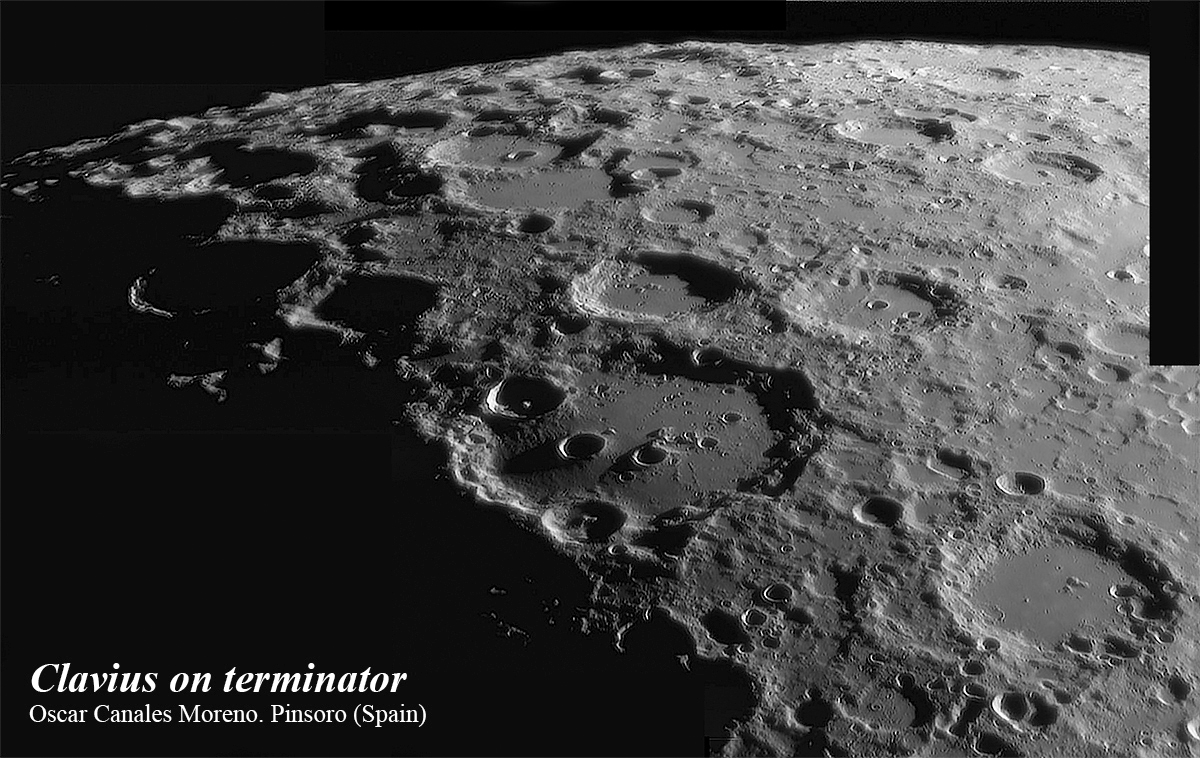Difference between revisions of "February 12, 2008"
| Line 20: | Line 20: | ||
<br /> | <br /> | ||
<br /> | <br /> | ||
| − | <!-- Removed reference to store page --> | + | <!-- Removed reference to store page 2 --> |
<p><b>Yesterday's LPOD:</b> [[February 11, 2008|Scooting Along]] </p> | <p><b>Yesterday's LPOD:</b> [[February 11, 2008|Scooting Along]] </p> | ||
<p><b>Tomorrow's LPOD:</b> [[February 13, 2008|Monumental Lunar Reference]] </p> | <p><b>Tomorrow's LPOD:</b> [[February 13, 2008|Monumental Lunar Reference]] </p> | ||
<!-- End of content --> | <!-- End of content --> | ||
{{wiki/ArticleFooter}} | {{wiki/ArticleFooter}} | ||
Latest revision as of 23:11, 8 February 2015
Glistening

image by Oscar Canales Moreno, Pinsoro, Spain; south up
Like an athlete rubbed with oil, this image glistens. Part of the reason is the nearly classic gaussian distribution of brightness values ("levels" in Photoshop Elements). The maximum of the histogram is in the middle of the black to white continuum, and more importantly there is a smooth distribution of tones leading to both pure white and absolute black. Although other images of the south polar region have higher resolution and less clipping, this one sings. So what does it show about the Moon? Notice that Longomontanus, the large, flat-floored crater at the bottom right of Clavius, overlaps the smaller crater, Longomontanus Z. This is one of the infrequent cases of a larger crater occurring after a smaller one. Of course, large craters have more area than smaller ones and quite likely will obliterate earlier smaller ones, but overall there appears to have been a rapid decrease in the diameters of craters in the first half-billion years of lunar history. The largest impact depression are basins and they are all ancient, and other large features, such as Clavius (225 km diameter) and Bailly (330 km at top right), are also quite old. Another feature to note in Oscar's image is much less conspicuous and may not even be real. Between Kircher and Blancanus (above right from Clavius) are smooth plains and occasional ridges. These ridges seem parallel, and getting out my old lunar globe, I see that they are approximately radial to the Orientale Basin. They seem to be the sides of basin secondary craters. And I suppose the smooth material around them is fluidized ejecta. Not a bad story from a pretty picture.
Chuck Wood
Technical Details
3 Nov 2007. Newton Skywatcher 250mmEQ6 f/25 + Videocamera Mintron 12v6-EX- + Canon MV500i + Red Filter W25 + Powermate 5x. VirtualDub and Avisynth for deinterlace and video capture, Registax 4 + Photoshop + Focus Magic. Five images mosaic with 250/2000 images at 50 img/sec.
Related Links
Rükl plates 72 & 73.
Yesterday's LPOD: Scooting Along
Tomorrow's LPOD: Monumental Lunar Reference
COMMENTS?
Register, Log in, and join in the comments.



